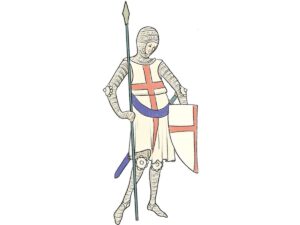Art of Mesopotamia: History and Techniques

In this article we study the art of one of the most ancient and influential civilizations in human history – Mesopotamia.
Situated in a fertile valley between the Tigris and Euphrates rivers, Mesopotamia was the cradle of many cultures, including the Sumerians, Akkadians, Babylonians, and Assyrians.
These peoples created a rich and varied artistic tradition that has had a profound influence on subsequent civilizations.
Historical Context of Ancient Mesopotamian Art
Mesopotamia, often called the “cradle of civilization”, was home to a variety of ancient cultures, including the Sumerians, Akkadians, Babylonians and Assyrians.
Each of these cultures contributed to the development of art and painting.
The art of Mesopotamia, located in the lands between the Tigris and Euphrates, has absorbed the centuries-old history and cultural heritage of one of the most ancient civilizations in the world.
This cradle of ancient cultures, covering the Sumerians, Akkadians, Babylonians and Assyrians, became the foundation on which much of the subsequent development of world art was built.
The art of Mesopotamia, striking in its monumentality and attention to detail, was not an end in itself. It served as a means of conveying religious ideals, demonstrating the power and might of rulers, and as a way of documenting historical events.
Reliefs and statues depicting gods, kings and mythical scenes carry deep meaning, giving us a glimpse into the world of the ancient Mesopotamians, their beliefs and way of life.
Mesopotamian art had a particularly significant influence on Middle Eastern culture and, through it, on Greek and Roman civilizations.
The motifs and stylistics of Mesopotamian reliefs and sculptures were reflected in the art of Western Asia, and later penetrated into Greek and Roman architecture and sculpture.
Elements of Mesopotamian culture can be seen in many aspects of classical art, including the use of columns, ornamentation, and composition.
Techniques and Materials of Mesopotamian Masters
Unlike other ancient civilizations, which used a variety of different paints and pigments, Mesopotamian painting was largely limited to the use of clay and stone as the main materials.
Artists of ancient Mesopotamia were real masters of their craft. They cut out the figures of the gods and kings directly from the stone, creating deep reliefs for decorating palaces and temples.
Potter was sculpted from clay not only simple dishes for everyday use, but also magnificent vases with images of myths and legends. Everything was made of copper and bronze: from small jewelry to large ritual objects and weapons.
Themes and Subjects of Mesopotamian Art
Themes and subjects in Mesopotamian painting were often religious or related to royalty. In ancient Mesopotamia, artists developed unique techniques and used a variety of materials to create their works.
These techniques and materials reflected the available resources, technological advances, and cultural preferences of the region.
Famous Works of Art and Findings
Victory stele of Naram-Sin: This relief shows the Akkadian king Naram-Sin ascending a mountain, symbolizing his divine rule.
Ishtar gate: One of the most famous examples of Mesopotamian art, decorated with glazes and images of dragons and bulls.
Assyrian reliefs: Found in the palaces of Assur and Nineveh, these reliefs depict scenes of hunting, battles and ceremonies.
How to Draw in a Mesopotamian Style Step by Step
Step 1: Draw the construction lines
The draw the lion, image begins by sketching out the basic shapes of the lion, using circles and ovals to define the torso, head and limbs, and straight lines to define the tail and paws.
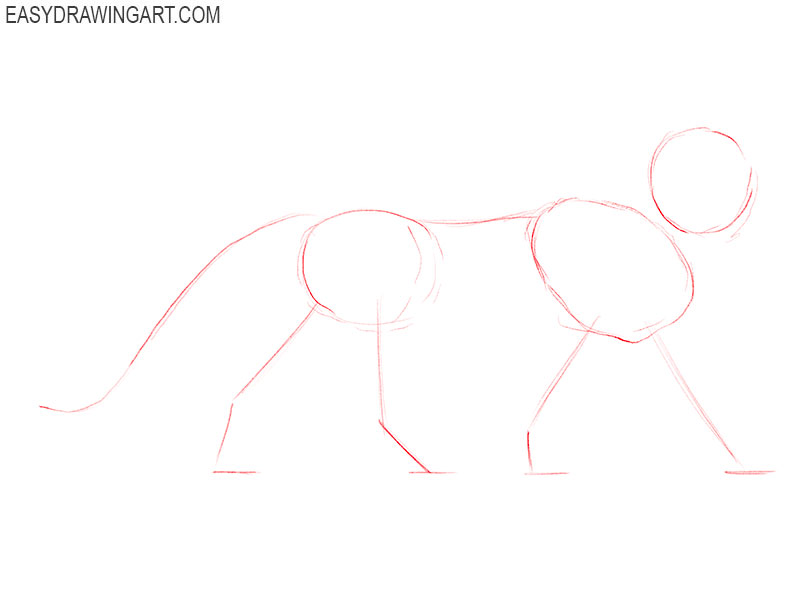
Step 2: Start adding volume
Add light lines to the basic shapes to create volume and musculature of the body, including more detail on the limbs and torso of the mesopotamian lion.
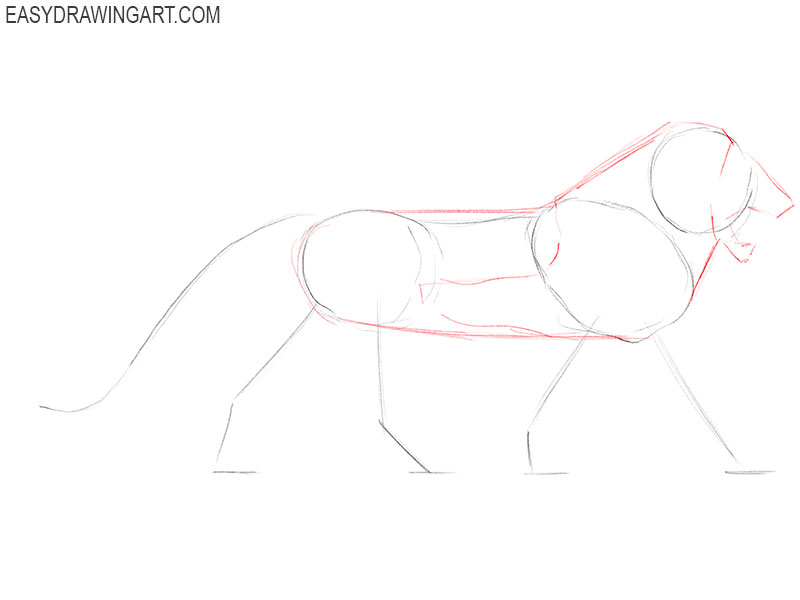
Step 3: Add volume to the limbs
Now add a little volume and muscle to the lines and dashes from the first stage. Throughout human history, the lion has been considered a very formidable animal, so try to convey this through strong muscles in the drawing.
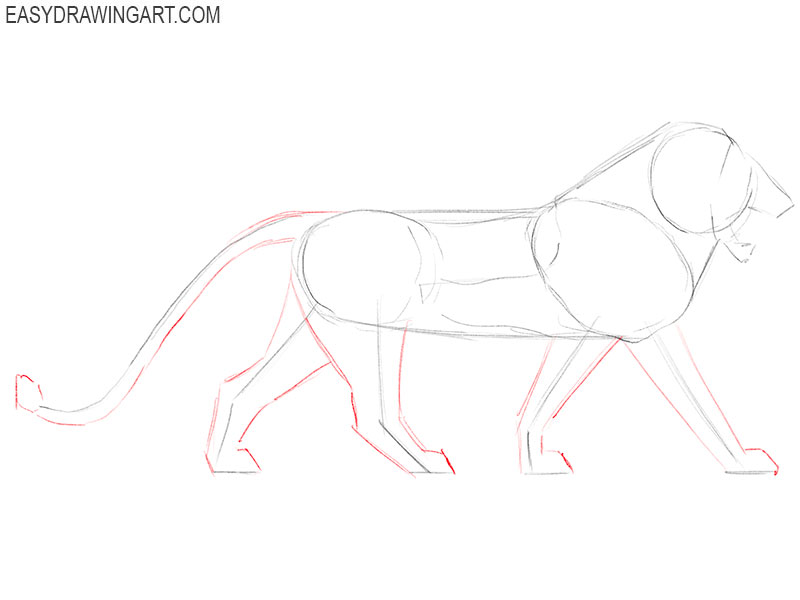
Step 4: Draw the face of the Mesopotamian lion
Once the volume of the body is specified, the next step is to create clearer and more detailed contours of the lion. Draw the lion face in detail.
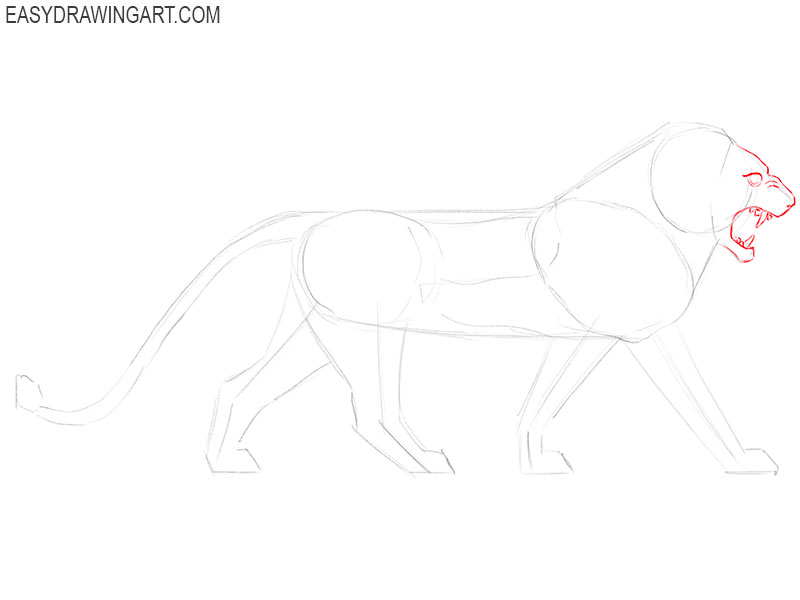
Step 5: Add the mane and ear
Please note that the mane is drawn very schematically. Firstly, many drawing techniques were not invented in those days, and secondly, this will add the necessary stylization to the artwork.
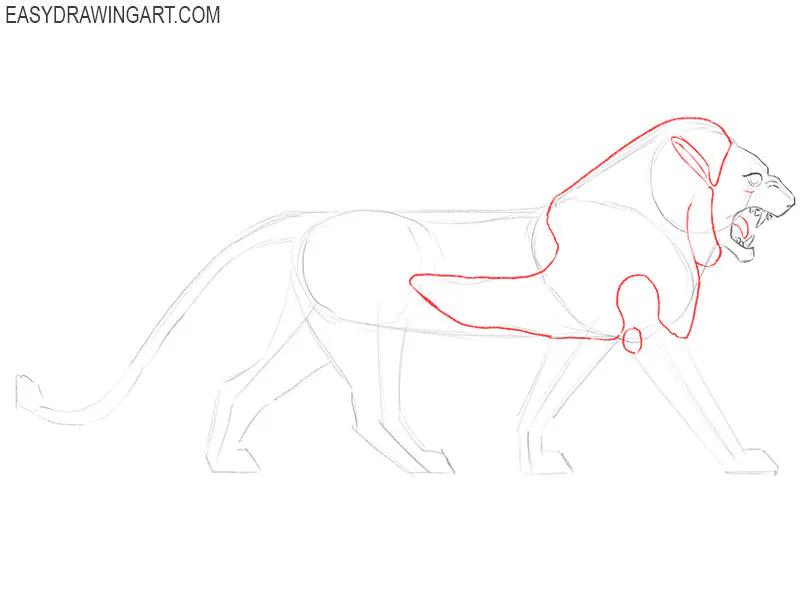
Step 6: Detail the front limbs
The lion’s body contour is refined to reflect anatomy and movement, with special attention paid to the animal’s powerful paws and arm muscles.
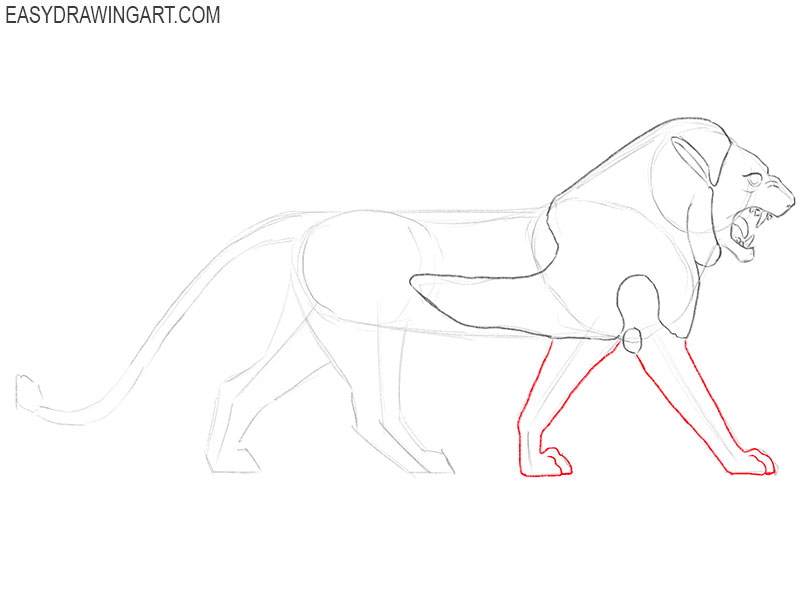
Step 7: Detail the tail and torso
As with the hind limbs, it is necessary to convey the powerful muscles of the animal. But it is very important not to go into too much detail, because we still need to maintain stylization.
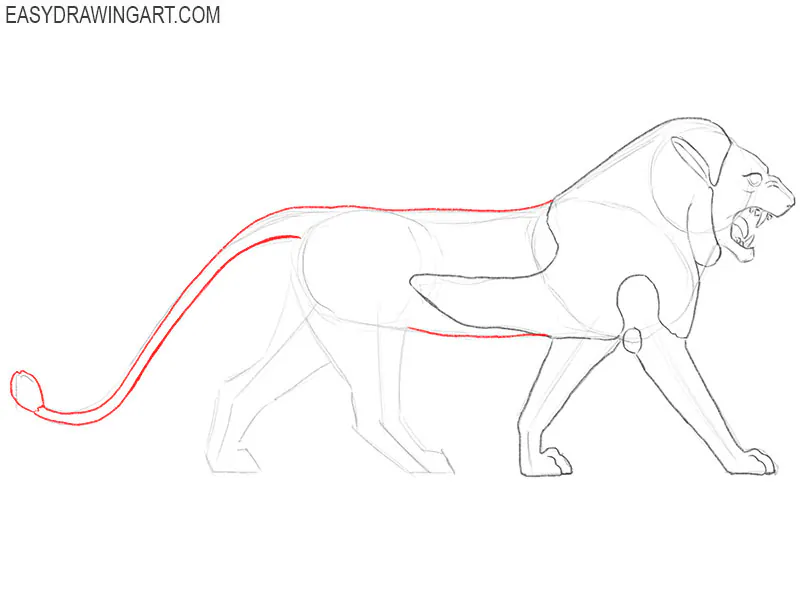
Step 8: Draw the hind legs of the Mesopotamian lion
In ancient Mesopotamia, the masters already understood that such a volume was and were well versed in anatomy, so they could rather believably convey muscles in their works of art.
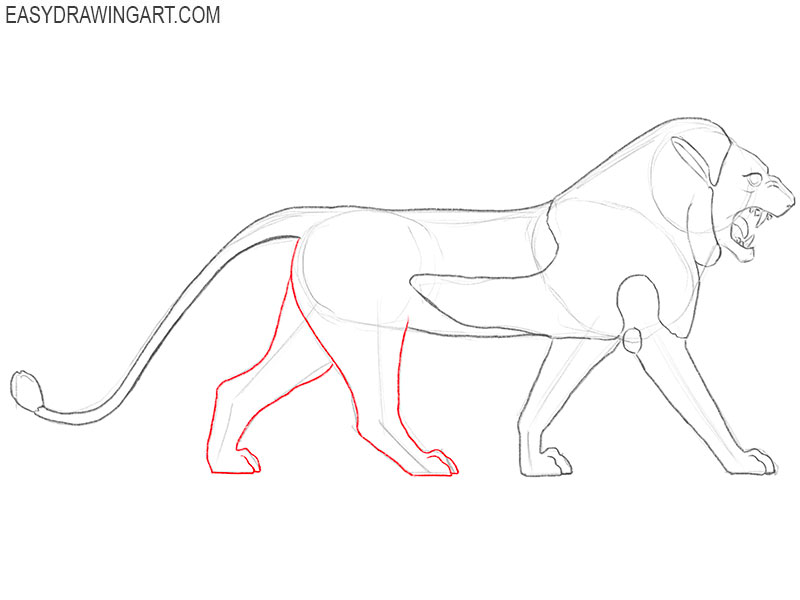
Step 9: Create the texture of the mane
Despite the fact that the lion is made in a fairly realistic manner, the texture of its mane is made very schematically. This is done in order to give the lion the necessary stylization.
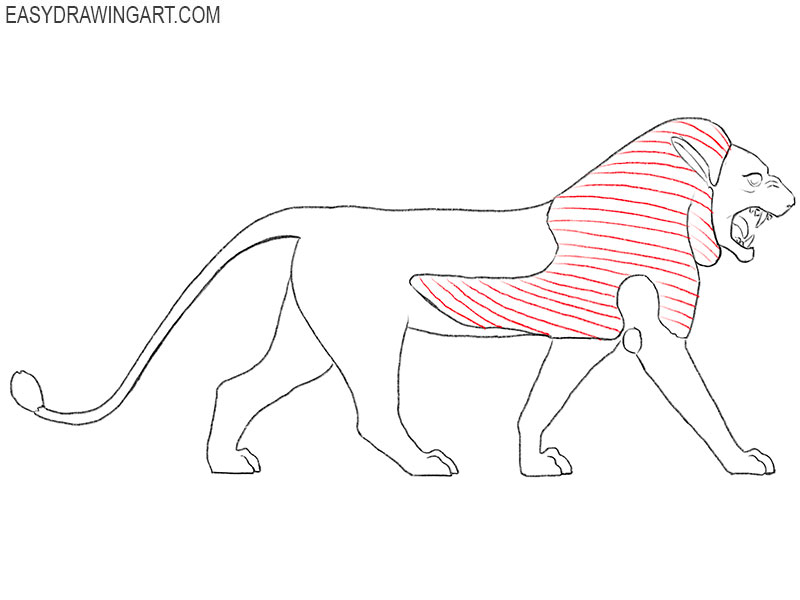
Step 10: Complete the stylization of the mane
The texture of the mane will have to look like a mesh of uniform rhombuses. In addition, create the texture of the muscles on the legs and torso of the lion.

Step 11: Start adding color to the Mesopotamian artwork
Despite the limitations in materials, masters of ancient Mesopotamia skillfully created the colors and shades on the body of people and various animals.
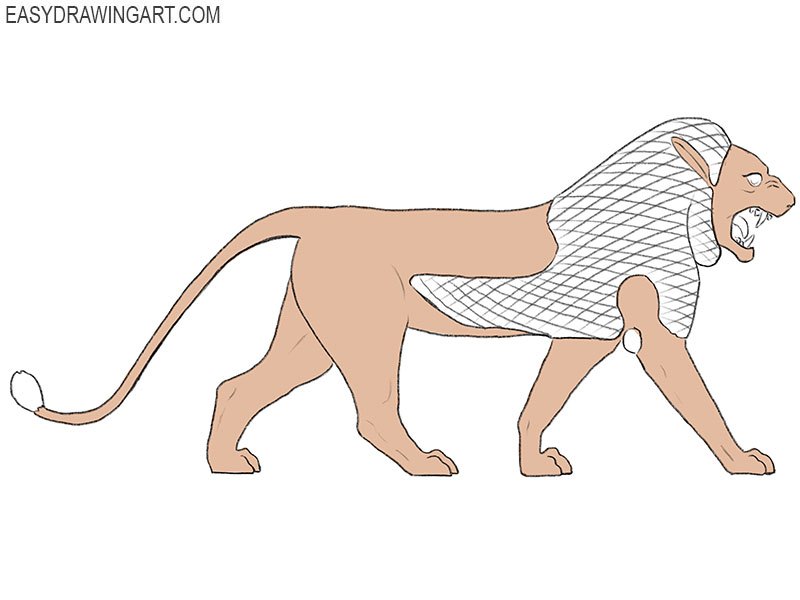
Step 12: Color the mane of the Mesopotamian lion
Colors and their combinations can create the necessary sensation from a work of art. The calm color of the body of the lion in combination with a more saturated bronze color of the mane will give the most correct Mesopotamian appearance to your lion.
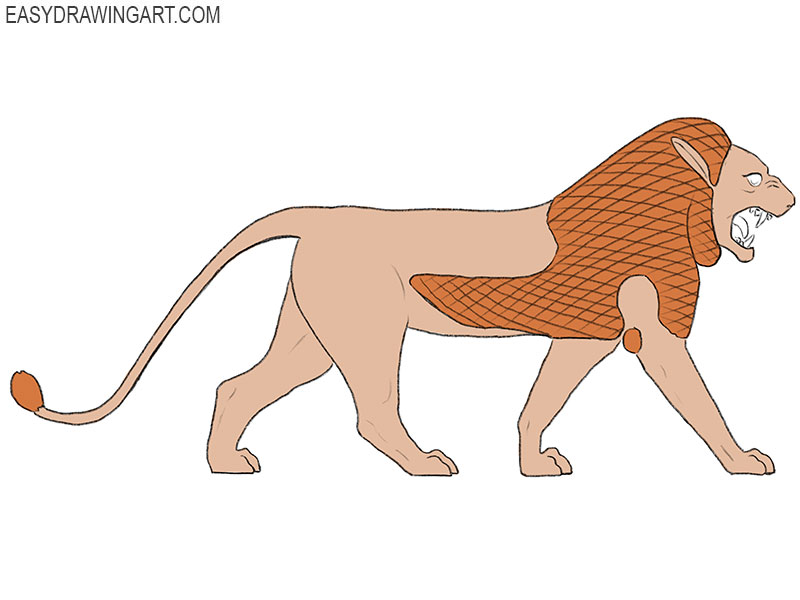
Step 13: Give your Mesopotamian lion a final look
Now paint the eyes and teeth of the Mesopotamian lion. In addition, you can take a slightly darker color and add shadows. This will make your Meosopotamian art more voluminous.

Conclusion
The art of Ancient Mesopotamia was closely related to the religious and political beliefs of the time. It reflected important aspects of social life and culture, including power, religion and daily affairs.
Despite the fact that many works have not survived to this day, what has survived testifies to the high level of skill and artistic imagination of ancient Mesopotamian artists.


